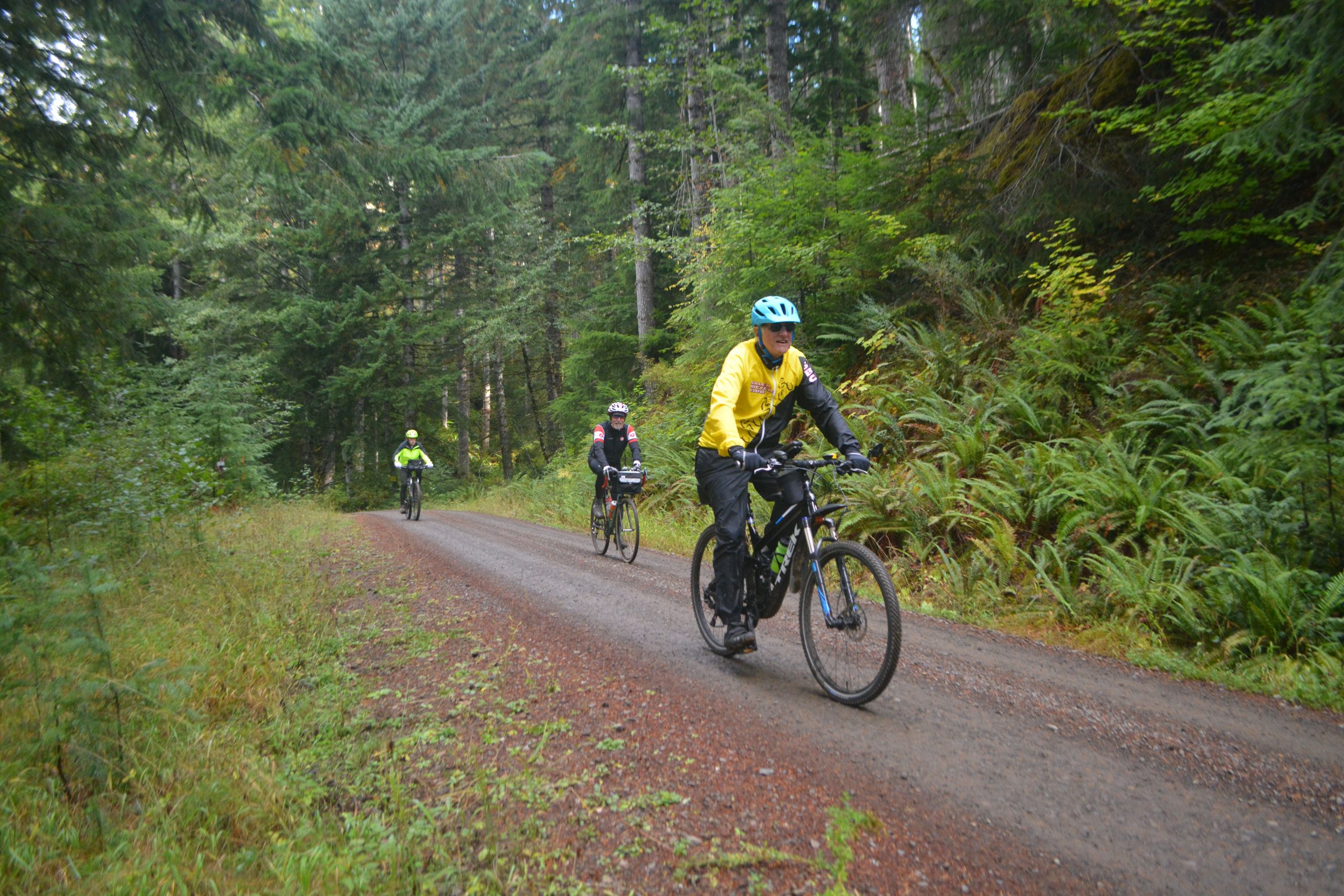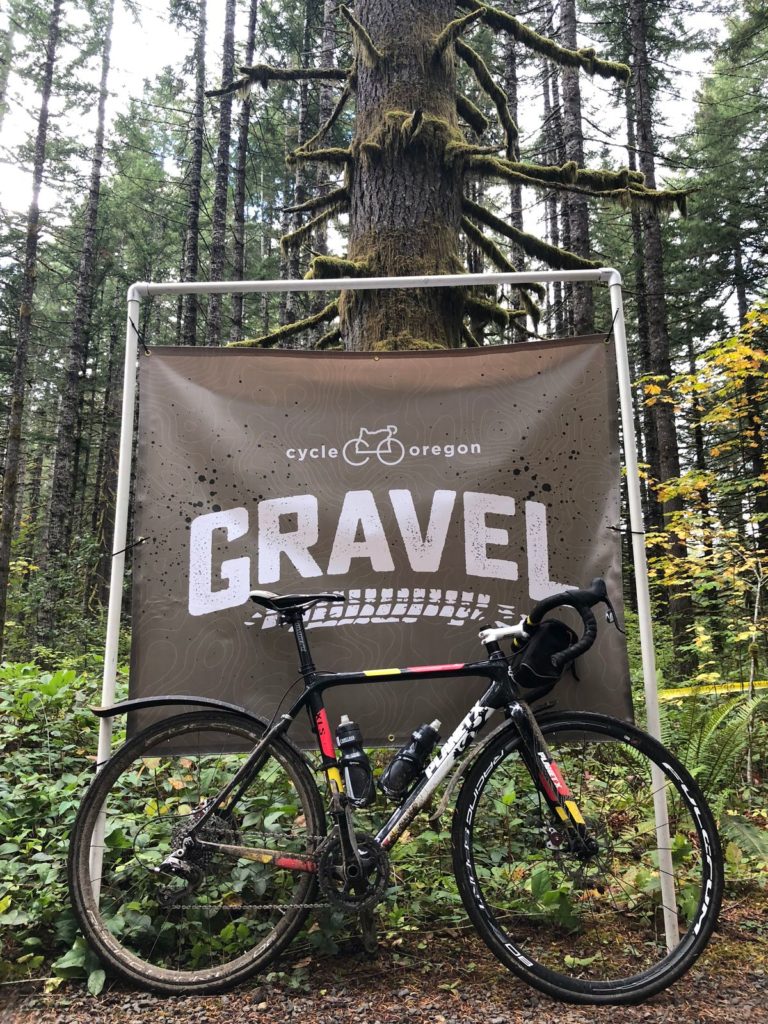What is gravel cycling?
Gravel riding, gravel cycling, or gravel biking, is a popular form of cycling that combines elements of both road and mountain biking. It consists primarily of distance riding over unpaved roads and trails that are usually located in rural areas. Gravel cycling allows you to discover scenic places you can only experience during an adventure off the beaten path.

How does riding gravel compare to road cycling?
Gravel riding and road riding are the two of the most popular forms of cycling. On the best gravel bikes, you can go almost anywhere off-road from muddy trails and singletrack forests to dirt roads and rock-covered gravel. Road bikes will take you anywhere on pavement, whether it’s up the sides of mountains, on local bike paths, through the city to work, or around your local crit circuit. Gravel riding is different because you will spend most of your time on uneven surfaces compared to the pavement when you are on a road bike. You will also encounter much less vehicle traffic when riding gravel.
Is gravel riding harder than road riding?
Yes, gravel riding can be more challenging because the looseness and irregularity of the gravel creates a less stable riding surface, making your bike handle less predictably. It also can send vibrations through the bike to your body, making you work harder to stabilize while riding. Since gravel riding requires more grip strength and using your arms as suspensions, it’s more of a full body workout compared to road riding. It also takes more effort to pedal when you’re on a loose surface.
Some cyclists say that riding 100 kilometers on gravel is like riding 100 miles on the road! Of course, gravel routes can vary greatly. Some are flat and easy to navigate. Other routes have gnarly terrain with intense climbs and descents. The bottom line is that gravel riding typically requires more upper body and core strength and a bit more attention to the terrain than road riding.
Gravel bike riding tips and techniques
While you may be familiar with road cycling techniques, gravel riding involves a whole new set of skills. Below are some gravel riding techniques and tips for a good riding experience.
Tire Pressure and Tires
Gravel specific, or ‘all road’ tires will be your best bet here. They are wider, more heavy duty and have a more aggressive tread than your typical road tire, which will give you better traction and stability. To give you better ground contact and a more comfortable ride without slowing you down, lower your tire pressure. If you fill your tires to the max, there’s no “give,” and the ride will be bumpy and uncomfortable. An excellent place to start is at your tire specification’s lowest limit and then increase the psi from there. Most gravel cyclists recommend using tubeless tires. This allows you to run a very low tire pressure and eliminate the potential for pinch flats. Also, if a tubeless tire is punctured, it will self seal itself and keep you on the road.
Terrain
On bumpy terrain, ensure your feet are in the 9 and 3 o’clock positions to create a flat “platform” and lift your bottom off the saddle slightly. This allows you to use your arms and legs as suspensions so you can focus on looking at the road ahead. If you are in rough terrain for more than a moment, keep pedaling, hover over the saddle and keep your elbows bent and loose. Gravel riding terrain varies greatly and you’ll often encounter obstacles in your path. Remember, your bike goes where your eyes go, so quickly identify upcoming obstacles to navigate around them, but keep looking past them, or else you’ll end up right in the obstacle!

Climbing
When climbing uphill, sit and pedal to prevent your rear wheel from sliding out and losing traction. Make sure you have some of your weight on the handlebars so that your front wheel stays in contact with the ground. The distribution of your weight is key.
Descent
When descending, stay in control. Make sure to scan for obstacles and keep your bottom over the saddle. When riding around a curve, use smooth movements and keep your weight over the outside pedal. This will help keep your tires in contact with the surface so you don’t end up sliding out.
Best Gravel Bike Riding Gear
There’s no wrong or right answer when it comes to choosing your cycling gear for your next gravel ride. Here are some recommendations that will make the ride more enjoyable:
Showerspass
Our sponsor, Showers Pass, has some of the best gravel cycling shorts. We recommend the Showers Pass Men’s Gravel 10″ Shorts and the Women’s Gravel 8″ Shorts because they are versatile, lightweight, and also have an internal micro-adjustable waist cinch. They are also good for gravel riding because it has a nylon-spandex blend, which gives you the comfortable four-way stretch that makes it easy to maneuver when on a ride.
Trek
Another one of our sponsors, Trek has a variety of the best gloves for gravel riding. The glove we recommend is the Bontrager Quantum Full Finger Cycling Glove because it is a lightweight, breathable cycling glove that offers full coverage when trail debris or overgrown vegetation gets in your way while gravel riding. It is also built with a lightly padded synthetic leather palm, which offers great durability and excellent handlebar feel to keep you in control.
Camelbak
Hydration is vital when it comes to cycling. We recommend the CamelBak M.U.L.E. Pro 14 100oz hydration pack. It has the all-new Air Support™ Back Panel which allows for maximum airflow to provide comfortable cooling. It also has a large capacity 3-liter Crux® Reservoir, hip belt with cargo carry, and bike tool organizer making it easy to plan a full day’s ride. This is good for gravel riding because it gives you room to carry additional items you may want to bring with you while riding less traveled backcountry roads.
Argonaut Gravel bike
Recently, the Oregon-based bike manufacturer Argonaut released the GR3, which is a giant leap forward in gravel bike design. It combines a race gravel bike and an adventure gravel bike with a lower handlebar and short end. While the GR3 may not be in your future, when looking for a gravel bike the main things you should think about are:
- Type of frame you want
- Gear range you prefer
- Drivetrain configuration
- Brakes
- Wheel size
Gravel cycling routes in Oregon

There are some fantastic Gravel routes throughout the pacific northwest for all experience levels. Here is a list of the best gravel routes developed by Cycle Oregon in three different regions of Oregon:
CO GRAVEL – Timber, OR – Day 1
https://ridewithgps.com/routes/27985001
https://cycleoregon.com/wp-content/uploads/2018/09/FINAL-DAY-1-CO-2018-Gravel-9-25-18.1.pdf
CO GRAVEL – Dufur, OR – Day 1
https://ridewithgps.com/routes/28855984
https://cycleoregon.com/wp-content/uploads/2019/04/Day-1-GRAVEL-FINAL-Map-4-23-19.pdf
CO GRAVEL – Toldeo, OR – Day 2
https://cycleoregon.com/wp-content/uploads/2022/04/02-East-Harlan-Map-and-CUE-4-22-22.pdf
https://ridewithgps.com/routes/38387024
COME RIDE WITH CYCLE OREGON!
Ready to ride gravel? Each spring, Cycle Oregon hosts one of America’s most memorable multi-day gravel rides. Sign up for this year’s Gravel event and ride the road less traveled!
- Month: May
- Duration: 2 Days
- Cumulative Distance: 91-109 Miles
Greatly enjoy the problem-solving improvisational nature of gravel riding as a transition from more gnarly single track I did as a younger guy. Rode one gravel section on CO 22 and loved it!
My girlfriend/main riding partner a road rider so looking for other gravel fans.